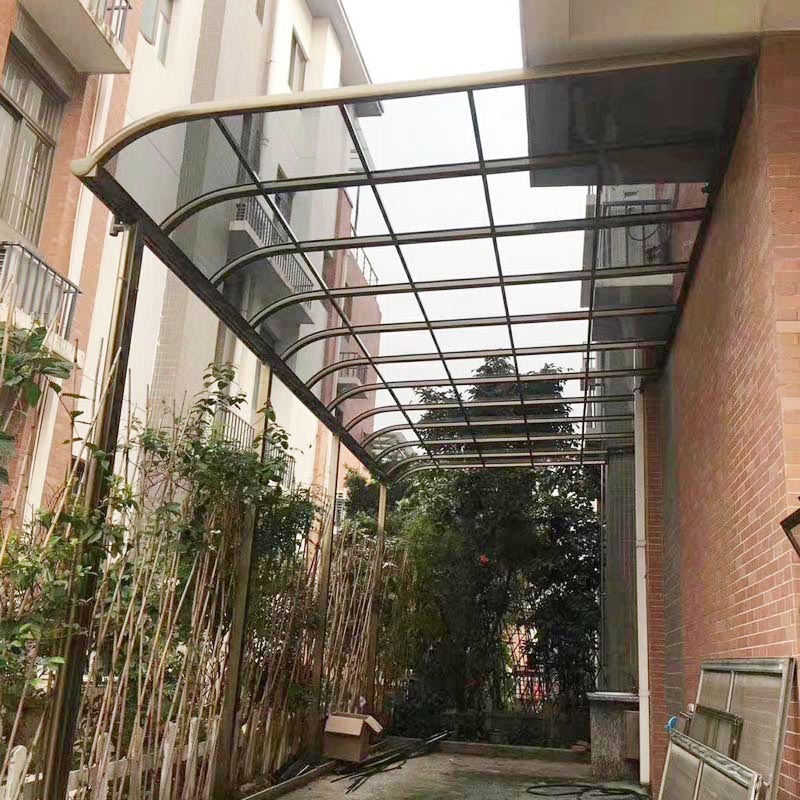Pros and cons of a polycarbonate awning for house
2024-07-02
Polycarbonate awnings are popular choices for residential applications due to their durability and versatility. Here are the pros and cons of using a polycarbonate awning for your house:

Pros of Polycarbonate Awnings:
1. Durability:
- Impact Resistance: Polycarbonate is highly resistant to impact, making it less likely to crack or break compared to other materials like glass.
- Weather Resistance: It withstands harsh weather conditions, including heavy rain, snow, and high winds, without degrading.
2. UV Protection:
- Polycarbonate sheets often come with UV protection layers, blocking harmful ultraviolet rays while allowing natural light to pass through. This helps protect your furniture, flooring, and other interior elements from UV damage.
3. Light Transmission:
- Polycarbonate can allow up to 90% of natural light to pass through, creating a bright and pleasant environment under the awning while providing shade.
4. Lightweight:
- Polycarbonate is much lighter than glass, making it easier to handle and install. This also reduces the structural load on the building.
5. Design Flexibility:
- It is available in various colors, styles, and finishes, allowing for customization to match your home's aesthetics. It can also be curved or shaped to fit different design requirements.
6. Insulation:
- Polycarbonate provides good thermal insulation, helping to regulate temperatures under the awning, which can contribute to energy savings.
7. Low Maintenance:
- It requires minimal maintenance, generally needing just occasional cleaning with mild soap and water to keep it looking good.
Cons of Polycarbonate Awnings:
1. Cost:
- High-quality polycarbonate awnings can be more expensive upfront compared to other materials like aluminum or fabric. However, the durability and longevity can offset the initial cost over time.
2. Scratches and Abrasions:
- Polycarbonate can be prone to scratches and abrasions. Although some variants come with scratch-resistant coatings, it is generally less scratch-resistant than glass.
3. Yellowing:
- Over time, prolonged exposure to UV rays can cause some polycarbonate materials to yellow. However, UV-protected polycarbonate can mitigate this issue.
4. Expansion and Contraction:
- Polycarbonate can expand and contract with temperature changes, which might lead to issues with mounting and sealing if not properly accounted for during installation.
5. Chemical Sensitivity:
- Polycarbonate can be sensitive to certain chemicals, including solvents and strong cleaners, which can cause damage or clouding.
6. Noise:
- Polycarbonate can be noisy during heavy rain or hail compared to other materials like fabric or traditional roofing materials.
Summary:
Polycarbonate awnings offer a durable, versatile, and aesthetically pleasing option for residential applications. They provide excellent light transmission, UV protection, and weather resistance while being lightweight and easy to install. However, they come with higher upfront costs, potential for scratches and yellowing, and sensitivity to temperature changes and certain chemicals. Considering these factors can help you decide if a polycarbonate awning is the right choice for your home.


